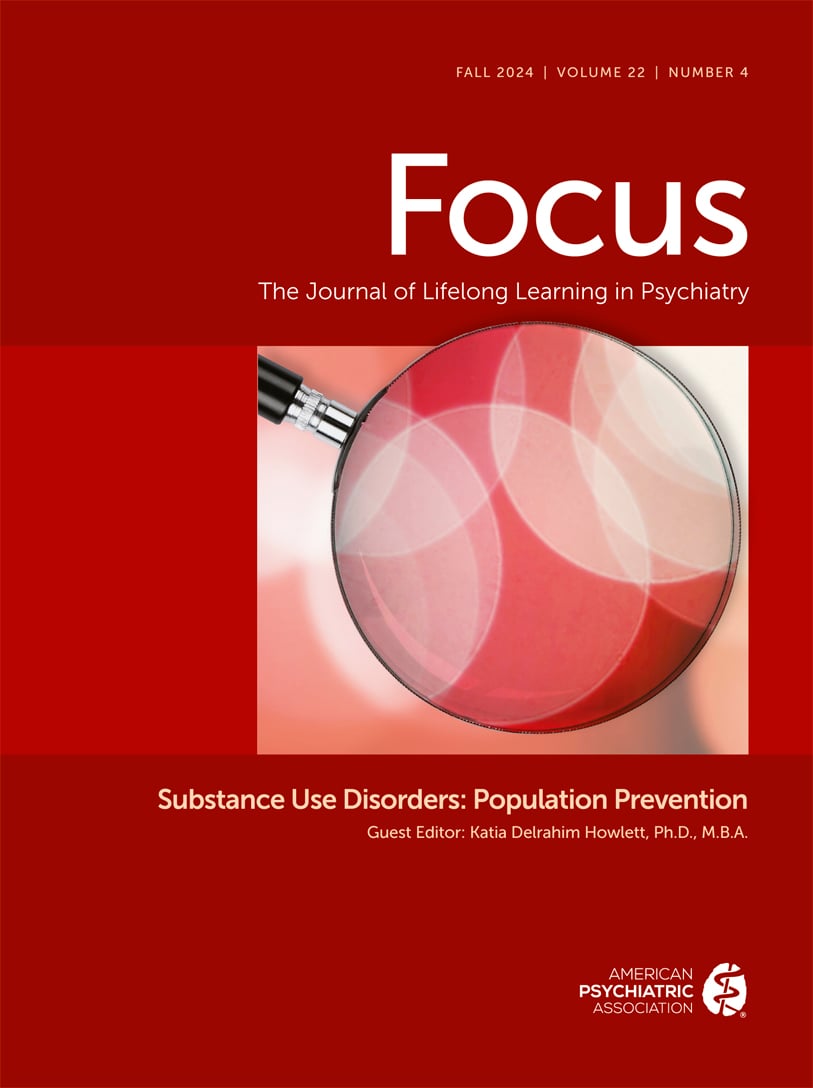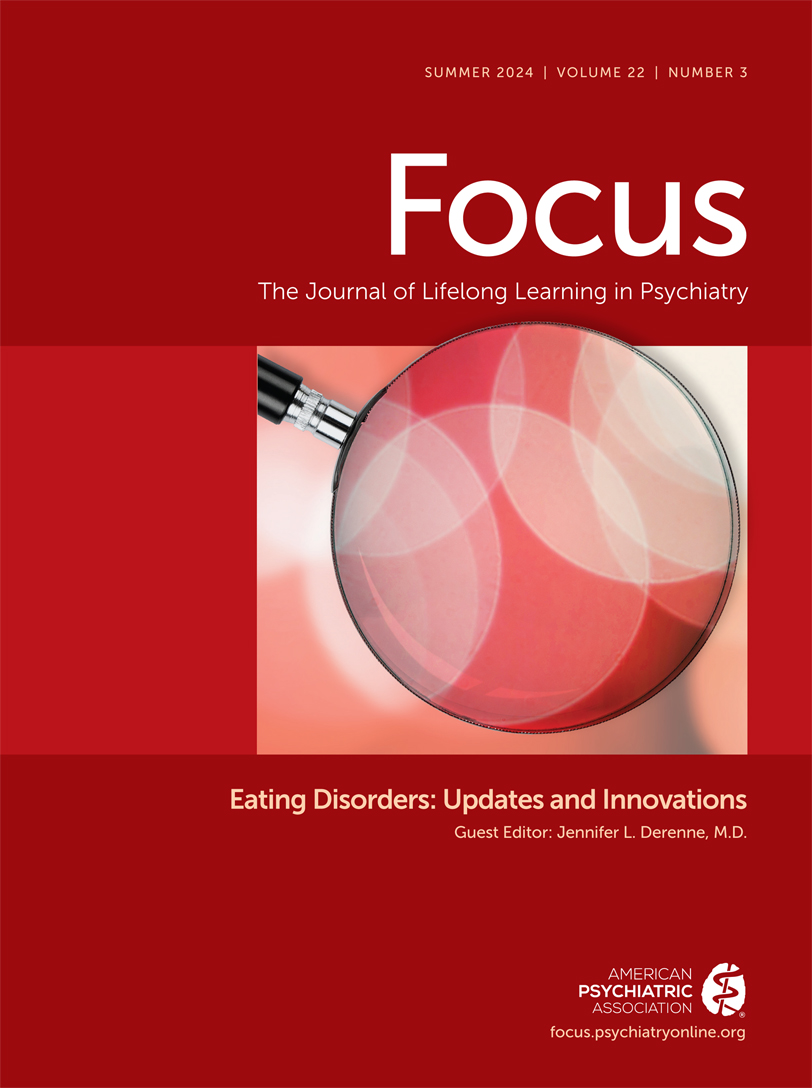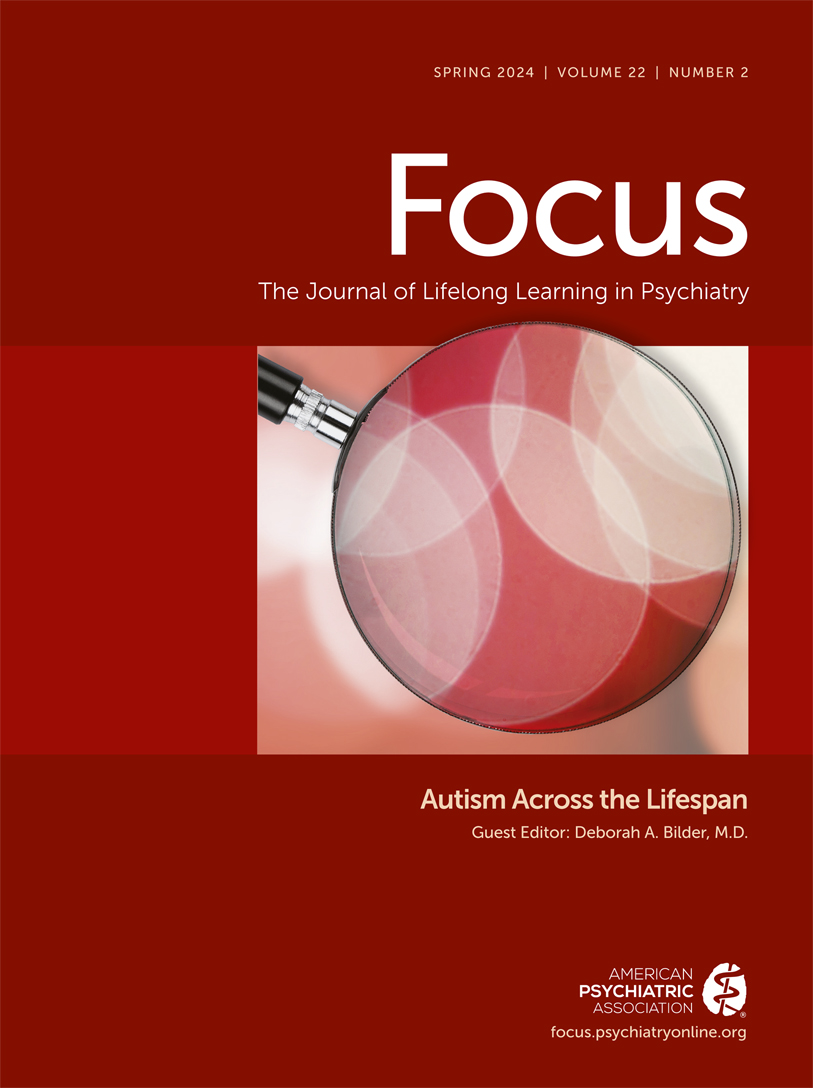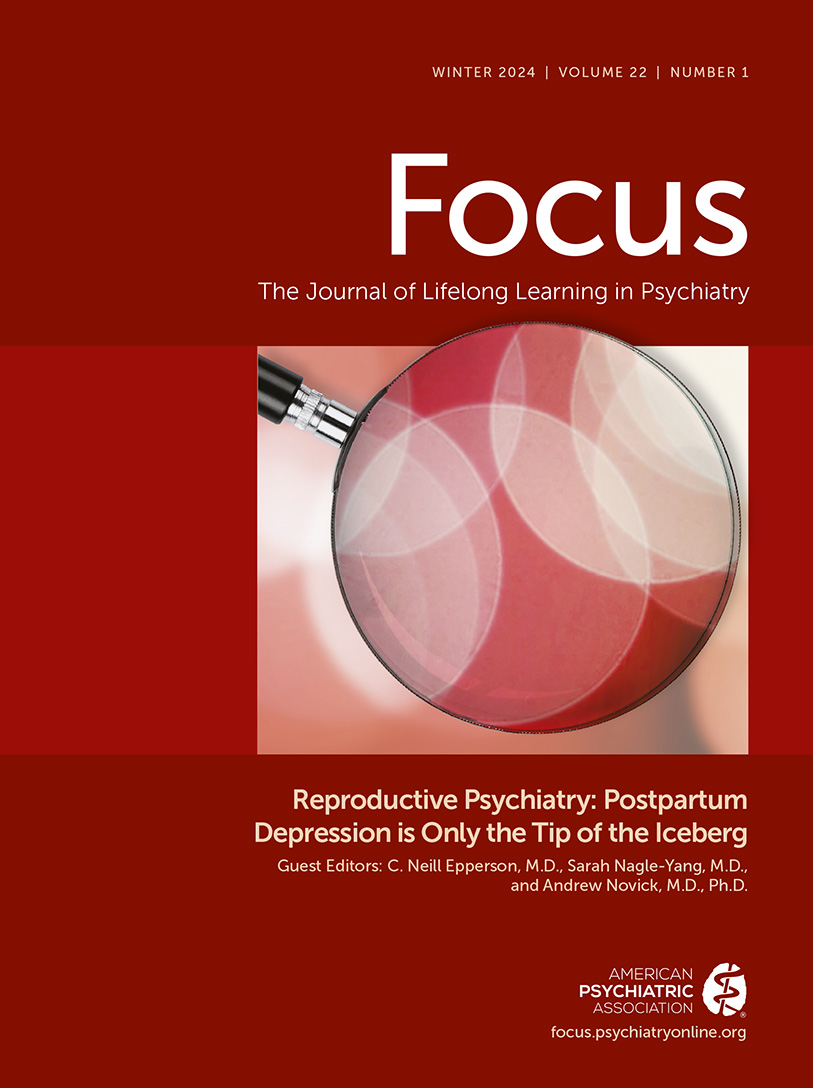Focus
- Volume 10
- Number 3
- July 2012
From the Guest Editor
Clinical Synthesis
Publication date: 01 July 2012
Pages255–265Pediatric chronic health conditions affect one-quarter of children and adolescents in the U.S. As a result, general psychiatrists will regularly treat adult patients whose children have chronic conditions. These conditions may be physical, mental, or ...
https://doi.org/10.1176/appi.focus.10.3.255Publication date: 01 July 2012
Pages266–281It is estimated that 5%-8% of school-aged children and 4% of adults in the United States suffer from some form of attention deficit disorder and that the incidence of the disorder is increasing in the population. Although it is the most widely studied ...
https://doi.org/10.1176/appi.focus.10.3.266Publication date: 01 July 2012
Pages282–292Abstract The seismic changes brought on by technology in the last decade have far outpaced clinicians’ knowledge about how these changes are affecting children and their parents. While there is still much that isn’t known about the impact of technology ...
https://doi.org/10.1176/appi.focus.10.3.282Publication date: 01 July 2012
Pages293–299Adolescent substance use and its consequent sequelae is a significant public health issue that has immediate and long-term consequences. Implementation of office-based strategies such as screening for substance use and early intervention can potentially ...
https://doi.org/10.1176/appi.focus.10.3.293Publication date: 01 July 2012
Pages300–307Patients with intellectual/developmental disabilities (IDD) present many challenges to mental health professionals. The capacity to work with such patients requires a working knowledge of IDD as well as an awareness and understanding of the factors that ...
https://doi.org/10.1176/appi.focus.10.3.300Publication date: 01 July 2012
Pages310–314This exercise is designed to test your comprehension of material presented in this issue of FOCUS as well as your ability to evaluate, diagnose, and manage clinical problems. Answer the questions below, to the best of your ability, on the information ...
https://doi.org/10.1176/appi.focus.10.3.310Influential Publications
Publication date: 01 July 2012
Pages334–345Objective: To assess the efficacy of cognitive behavioral therapy (CBT) for managing adolescent ADHD. Method: A total of 68 adolescents with ADHD and associated psychiatric comorbidities completed a manualized CBT treatment protocol. The intervention used ...
https://doi.org/10.1176/appi.focus.10.3.334Severe Mood Dysregulation, Irritability, and the Diagnostic Boundaries of Bipolar Disorder in Youths
Publication date: 01 July 2012
Pages346–359In recent years, increasing numbers of children have been diagnosed with bipolar disorder. In some cases, children with unstable mood clearly meet current diagnostic criteria for bipolar disorder, and in others, the diagnosis is unclear. Severe mood ...
https://doi.org/10.1176/appi.focus.10.3.346Publication date: 01 July 2012
Pages360–373Research in etiology, neurobiology, genetics, clinical correlates, and evidence-based treatments in children and adolescents with obsessive-compulsive disorder indicate a need for the revision of the Practice Parameters for the Assessment and Treatment of ...
https://doi.org/10.1176/appi.focus.10.3.360Publication date: 01 July 2012
Pages380–388Objective: To evaluate the clinical and prognostic significance of suicide attempts (SAs) and nonsuicidal self-injury (NSSI) in adolescents with treatment-resistant depression. Method: Depressed adolescents who did not improve with an adequate SSRI trial (...
https://doi.org/10.1176/appi.focus.10.3.380Publication date: 01 July 2012
Pages389–400Objective: The authors sought to assess the longitudinal course of youths with bipolar spectrum disorders over a 4-year period.Method: At total of 413 youths (ages 7–17 years) with bipolar I disorder (N=244), bipolar II disorder (N=28), and bipolar ...
https://doi.org/10.1176/appi.focus.10.3.389Publication date: 01 July 2012
Pages401–407Objective: The use of antipsychotic medications among children and adolescents has increased substantially in recent years, predominantly in disorders for which effective psychosocial interventions exist. The authors of this study examined the extent to ...
https://doi.org/10.1176/appi.focus.10.3.401Past Issues
View Issues Archive
Vol. 22 | No. 4

Vol. 22 | No. 3

Vol. 22 | No. 2
